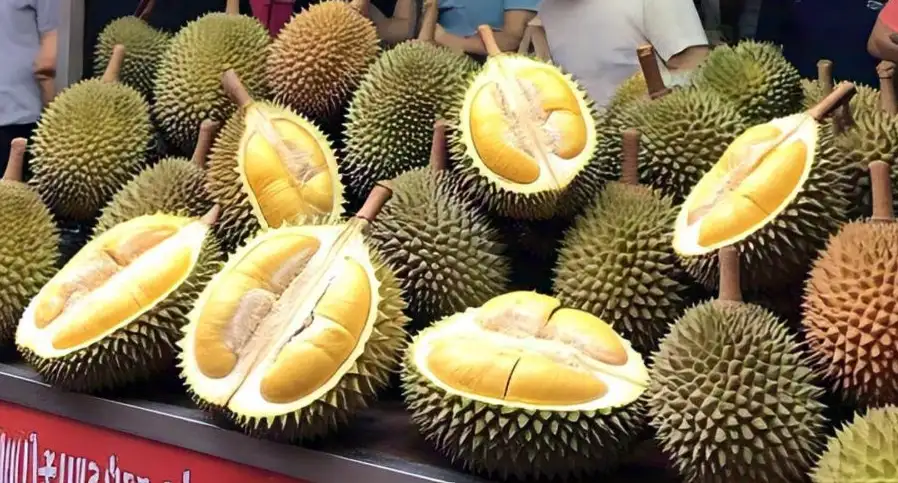Imagine walking through a bustling Southeast Asian market, the air thick with the unmistakable aroma of durian. For some, it’s an irresistible invitation; for others, a pungent barrier.
But have you ever stopped to wonder why durians are almost exclusively sold in outdoor stalls or markets? This unique phenomenon ties deeply to both practicality and tradition.
Let’s delve into the reasons behind this iconic practice and uncover the evolving culture that makes durian stalls so special.
The Practical Reason: The Smell
One of the most significant factors influencing the outdoor sale of durians is its pungent aroma, which can be both pervasive and persistent. In Malaysia and many other Southeast Asian countries, durians are often banned in shopping centers and public transport due to their strong smell. Supermarkets that sell durians often pre-pack them in airtight containers to minimize the odor, but the scent still lingers.
Selling durians in open-air stalls solves this problem. The natural ventilation of outdoor spaces helps dissipate the smell, making the shopping experience more pleasant for durian enthusiasts and nearby businesses alike.
The Cultural Connection: Freshness and Experience
Durian stalls are more than just places to buy fruit—they’re hubs of social and culinary culture. Many roadside stalls specialize in providing fresh durians, straight from the orchard. This ensures optimal ripeness, a factor crucial for durian connoisseurs.
Additionally, durian stalls often double as tasting venues. Some stalls organize durian buffets, where customers can sample various cultivars such as the popular Musang King or D24. These buffets create a communal atmosphere where people bond over their shared love for durians, discuss flavor profiles, and learn about the fruit’s origins.
Innovations in Durian Sales: Buffets and Beyond
Events like durian buffets highlight the fruit’s versatility and appeal. For example, a recent durian buffet organized by a Wanchai shop in Hong Kong featured not only fresh durians but also durian-inspired products like:
- Durian ice cream
- Durian mochi
- Durian cheesecake
These events often include fun activities, such as lucky draws and quizzes about durian knowledge, adding a layer of entertainment to the culinary experience. Organizers also incorporate thoughtful touches, like providing mangosteens—known as the “Queen of Fruits”—to balance the “heatiness” of durians, as per traditional Chinese beliefs.
The Role of Social Media
Social media has significantly boosted the popularity of durian stalls and events. Enthusiasts share their experiences in Facebook groups and on other platforms, creating a dedicated community of serial durian buffet goers. These networks spread awareness about new stalls, exclusive events, and premium durian varieties, fostering a thriving durian culture.
Convenience Meets Tradition
Modern durian businesses are adapting to meet the demands of busy urbanites. Many stalls now offer delivery services, allowing customers to enjoy fresh durians from the comfort of their homes. Some even provide tools and tutorials for opening durians safely and efficiently.
Conclusion
Durian stalls have evolved from simple roadside setups to dynamic centers of culinary culture. Their outdoor nature, focus on freshness, and innovative approaches like buffets and delivery services cater to a wide range of customers. Whether you’re a seasoned durian lover or a curious newcomer, these stalls offer a unique and flavorful experience that captures the essence of Southeast Asia’s love for the King of Fruits.

